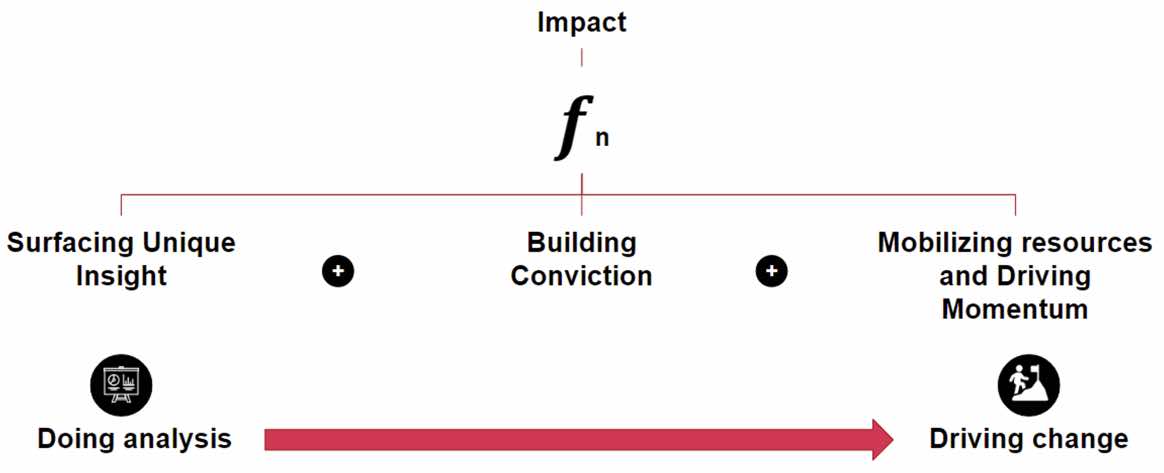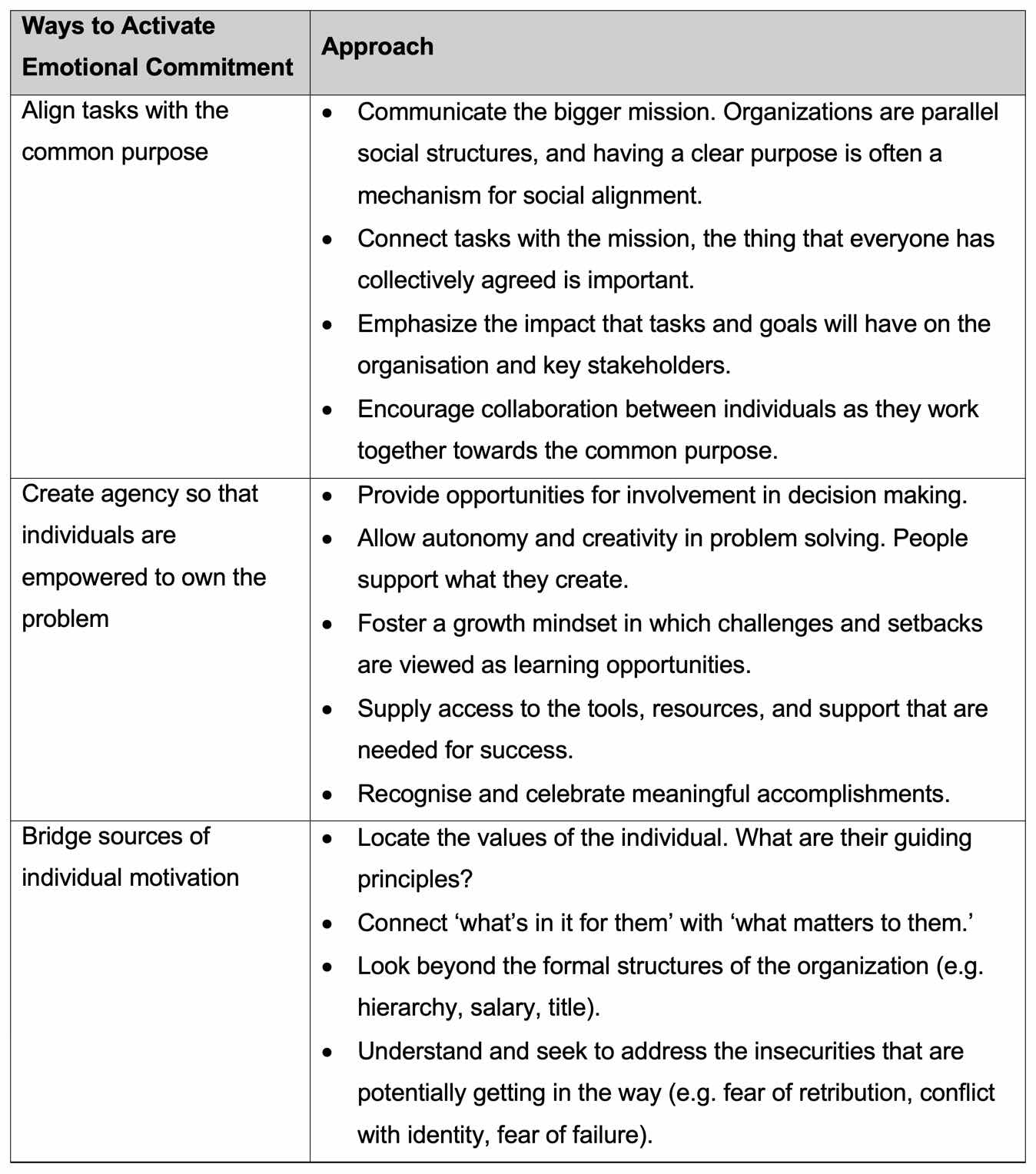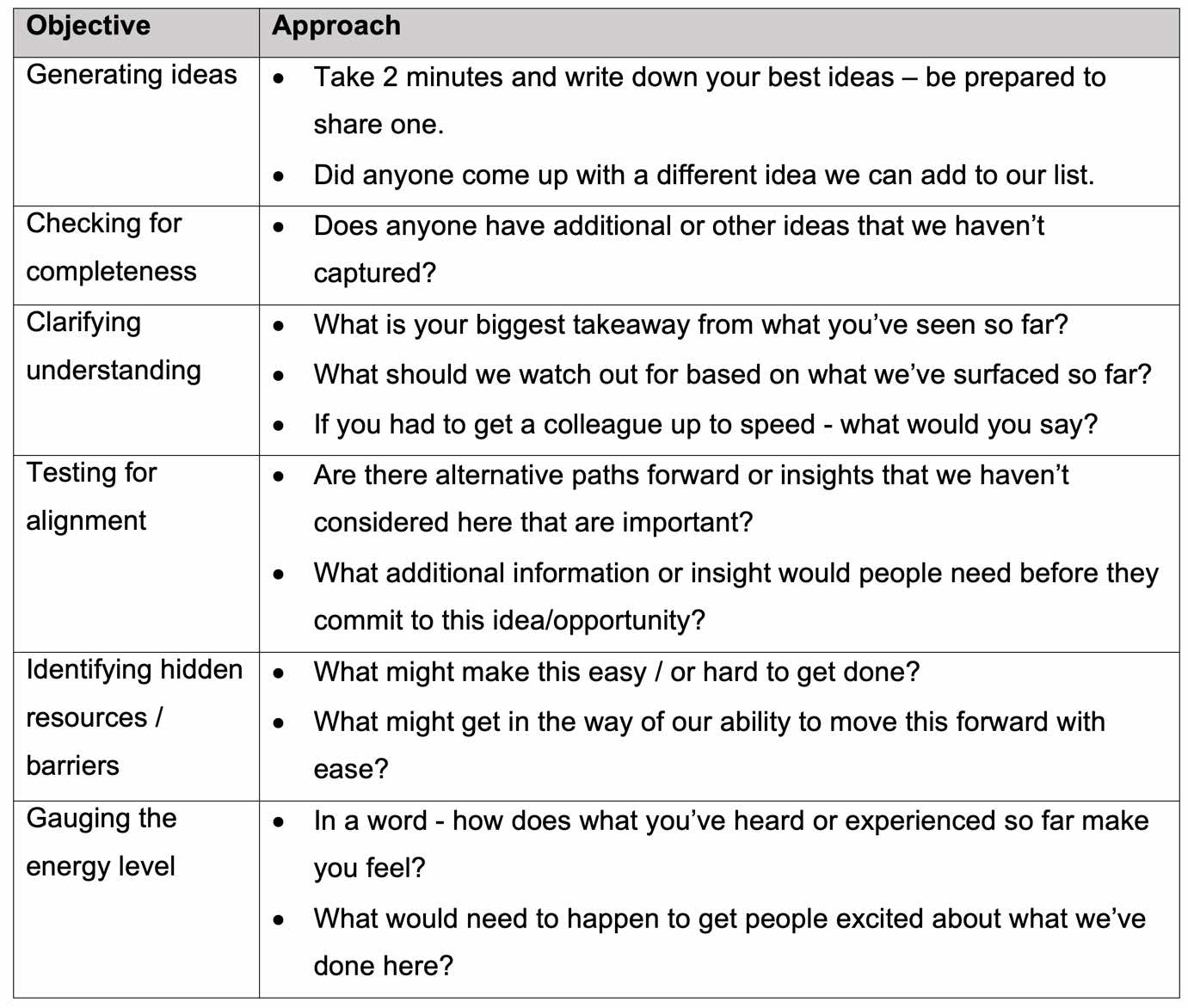Recently, I had the opportunity to run an “Impact Workshop” that aimed to reflect on our role as advisors (“consultants”), explore our individual motivations, and agree on behaviors that reflect our role.
Surprisingly, one of the biggest revelations was how much we underestimated the importance of facilitating and how much of a central role it plays in our day-to-day work.
In this article, I will share some of the key findings from the Impact Workshop with you.
The role of advisors
Delivering impact is a function of surfacing unique insights, building conviction, and mobilizing resources to drive the momentum for change.
Delivering impact involves moving along a spectrum from doing analysis to driving change. ‘Driving change’ is both a rational and emotional process and as consultants we need to balance both sides of the equation.
- Securing rational compliance from key stakeholders typically relies on formal structures, routines, and hierarchies to bring about an outcome. It is typically in our DNA to focus on this part of the process.
- Building emotional commitment taps into individual motivations and the way that people make meaning in their day-to-day interactions. It requires reinforcement and creating positive feedback loops between individuals that make change self-sustaining. It is often this element of the change process that gets in the way of our ability to deliver impact.
There are several ways to activate ‘emotional commitment’.
So, where are the opportunities for building emotional commitment? Where are the opportunities to surface ‘what matters’? How might we create agency for individuals who need to change?
Tips and best practices for running successful group sessions
Facilitation matters in the context of advisory work because it:
- Creates meaningful opportunities for connection
- Creates agency in the process
- Provides a forum for alignment and resolution
- Creates opportunities for teams to safely try new ways of working
A well-constructed approach to facilitation will acknowledge and align with the four-step learning process that business professionals go through when learning:
- Experience: Encountering new information
- Reflection: Contemplating the experience
- Generalisation: Creating a ‘mental model’ based on the experience
- Transference: Applying the learning to new situations
This model of learning provides advisors with three core pillars upon which learning experiences can be built to facilitate effective sessions and collaborations.
Pillar 1: It’s on us, but not about us
1.1 Amp up the energy
Clients need to own the solution, which means they need to feel engaged and energized throughout the problem-solving process.
Be conscious of how your mood, tone, and body language is communicating energy and excitement for the problem-solving process. Is this an exercise in discovery? Or does it feel like compliance?
1.2 Create connection
Adults learn by doing, not by listening.
Ask yourself – how have you designed the session and your interactions, from the moment people walk into the room, to be experiential and participatory?
1.3 Set the tone to contribute
We cast a long shadow – how we show up and respond to situations ‘sets the tone’ for all other interactions.
Show care, curiosity, humility, and vulnerability from the moment you turn up at the session. Share stories, and be clear on where people have thoughtful and challenging views that are contrary to yours. Genuinely probe for understanding.
Pillar 2: Know your content
2.1 Be prepared
Understand the context, the inbound situation, and the place you need to land (and why).
Ask yourself – How much context do people coming into the room have? What’s the lowest common denominator? What kind of ‘priming’ can you do to create common ground?
2.2 Give them only what they need
Think ‘learning outcomes’ – what do people need to internalize and in what order?
It is important to be realistic and practical about how much information can be effectively conveyed and absorbed by the client, which means hard calls may need to be made about how much information to cover in a given time frame.
Use your issue tree skills when preparing. What must people internalize or agree on to advance to the next step of problem solving?
Consider your client and how they make decisions. How far can you ‘stretch’ them before you can no longer credibly get them to commit? Let their capacity to comfortably absorb new inforamtion drive your agenda.
2.3 Plan for interaction
Questions will come up. Look for the meaning or the insecurity that underlies the question.
Questions are a window into points of resistance and opportunities to persuade people to support an idea or goal. Seek out the implicit concern or issue that underlies the question. Show participants they are heard.
Pillar 3: Engagement is key
3.1 Check for understanding
When designing a session or collaboration, align the process to the ultimate goal. This can be achieved by breaking the journey into smaller, more manageable steps that build upon each other in a logical and meaningful way. By doing this, you can ensure that each step is aligned with the final goal and that there is a clear pathway towards reaching that objective.
Ask yourself – what are the linear steps that people need to pass through? What concepts do they need to internalize to form a solution?
3.2 Co-create the experience
Give the audience choices and control over the interaction; choice creates agency.
When setting the agenda, brainstorming ideas, creating a plan, adjusting templates, or voting on a proposition – give the group options and the ability to make a choice. It can be a guided choice, but by giving people a choice you provide them a sense of autonomy and control over the situation. This is likely to make your audience more engaged and invested in the final outcome.
3.3 Employ tools to enhance engagement
Use exercises, physical interactions, and variety to create engagement and momentum.
People’s physical, mental, and emotional energy are connected. Find ways to use one to amp up the other. Get people moving, get them talking, get them contributing.
Bonus tip: Ask probing questions
When facilitating a session, asking probing questions can be an incredibly useful tool to help you achieve your objectives. Whether you’re looking to gain insights from participants, encourage deeper thinking or collaboration, or foster a more productive dialogue, probing questions can be the key to unlocking the session’s full potential. By posing well-crafted questions, you can encourage participants to reflect on their experiences and perspectives, challenge underlying assumptions, and arrive at new insights and ideas.
Below are some questions you can ask to help you achieve different objectives.
Summary of what we’ve learned
We need to move beyond rational compliance to drive emotional commitment around change. One of the most powerful tools that advisors bring to the table is our ability to bring diverse groups together and guide them in the process of creating a solution. People support what they create, and so giving them agency is likely to smooth the change process. Everything you see happening, no matter how strange, is perfectly rational. Your job is to figure out why … and help the organization to course correct.
Jason Oh is a Senior Associate at Strategy&. Previously, he was part of the Global Wealth & Asset Management Strategy team of a large financial institution and served EY and Novantas in their strategy consulting business with industry focus in the financial services sector.
Follow us now on LinkedIn.


